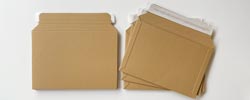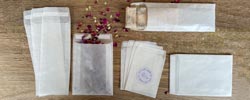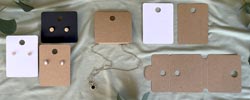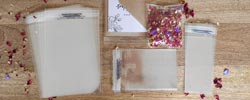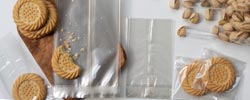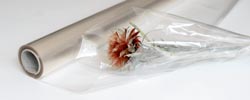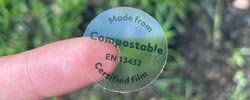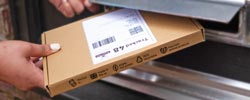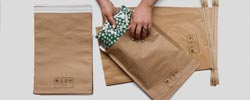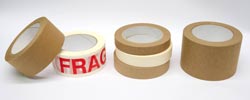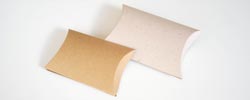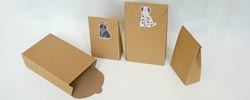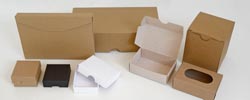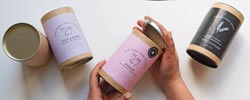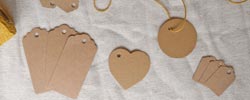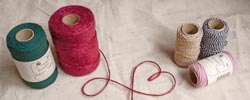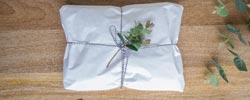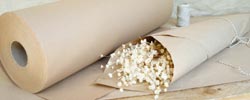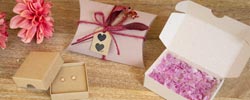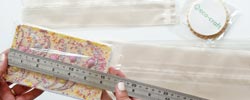What is Compostable Cellulose?
Although many of our customers have been using our Bio-based film bags since we launched them in 2007, for those of you who are new to the material, the following information should help to explain the differences between conventional petro-chemical based bags and the renewable bio-based replacement bags we now supply.
BIODEGRADATION:
Our cellulose bags and rolls of cellulose film are derived from renewable wood pulp and have similar environmental credentials to our greetings card bio-based film bags. Cellulose is a substance from a plants cell wall, this can be extracted from renewable plant material to produce the cellulose film. Once used, cellulose film (also known as Cellophane) will biodegrade producing ecotoxicity free biomass (compost), CO2 and H2O. Then these 2 compounds can be combined with sunlight and converted into energy by plants in a process called photosynthesis, resulting in more tree growth which can then be used to produce more bags. In contrast to crude oil based plastics which are non-renewable.
All our Cellulose bags are made in the UK from NatureFlex™ film that has been accredited compostable for both Industrial and Home Composting to 'EN 13432' and 'OK Compost Home'. They are also approved for Anaerobic digestion to ISO 15985. The film has also been tested to ensure that once composted there are no adverse (ecotoxic) effects on future plant growth to maintain a closed carbon loop. After use the film is approved to the OK Compost Home standard and for home composting can start to break down within a few weeks (depending on the ambient temperature). The film spec states that, when being composted, it must biodegrade to a minimum of 90% within 6 months although in reality this can be achieved in less than 45 days with industrial composting. Home composting will be at a lower temperature and will take longer. (To be most effective the composting process requires the presence of micro-organisms, moisture and a supply of oxygen, so for home composting you will need to turn the heap from time to time to aerate it.)
SHELF LIFE:
The cellulose film manufacturers recommend (for food use) a shelf life of about 6 months, stored at 17 to 23°C (room temperature), kept away from humidity and direct sunlight. (We have sample bags which we have stored in these conditions which have actually lasted much longer than this so they are quite stable if stored correctly.) However because this is a relatively new product we won’t have a definitive time scale until some of the original stock has started to degrade.
How the bags are stored is also very important for extending their shelf life – biodegradation is initiated in a soil, compost or waste water environment where micro-organisms are present. In normal UK retail conditions cellulose bags are quite stable The main thing to maximise shelf life, is to avoid exposure to humidity and excessive heat, moisture and light. So, realistically in normal shop use you could get 6+ months if not a year or more before any degradation could start to show. Biofilm bags are also very stable should they be splashed with water - they don't start to degrade immediately so if wiped off promptly they should come to no harm. (For a florist we have tested the film holding a ‘ball’ of water to see how long it would take fail and we were surprised to find out that it took about 4 weeks before it failed. Not very scientific but we just wanted to be sure that it doesn’t turn to ‘compost’ overnight!) Exposure to bright direct sunlight such as in a shop window can result in degradation / discolouration over time, however this is only likely to be a problem in extreme conditions.
WHAT IS CELLULOSE SUITABLE FOR USE WITH:
Although by no means comprehensive, some popular applications for cellulose bags include:
Dried fruits
Fudge / Biscuits
Rice / Dried beans / pulses / pasta
Chocolates / Truffles / Toffee / Sweets
Tea (leaves) / Coffee beans / granules
Herbs and Spices
Potpourri
Bath salts
Bars of Soap
Wrapping prints or flowers (Reels)
CELLULOSE FILM LIMITATIONS:
Although cellulose film is quite a versatile material there are some jobs for which it is not suitable. It is not water proof so is not suitable for containing wet food products (Drinks / yoghurt etc.).
Cellulose film is often used for wrapping prints etc. but as we cannot guarantee that cellulose is 100% 'acid free' we do not recommend it for use with valuable paintings or for archival purposes etc. Also it only comes in rolls wide enough to make smaller size bags so currently for larger bags we offer it by the roll instead
Due to the way cellulose bags are manufactured it is not possible to supply them with self seal strips like the PLA bags but they can be used with a heat sealer or sealed with an adhesive label instead.
They are not suitable for cold storage. The film manufacturer hasn’t tested the film for food use below 0'C so does not guarantee it for use in a freezer.
OXO-DEGRADATION:
There has recently been some confusion between bio-based film (Cellulose) and oxo-degradable plastics. Oxo- degradables are conventional plastics with additives to assist their disintegration into micro-plastic particles. You can therefore be assured that we DO NOT supply oxo-degradable plastics. All of our Bio-based film (PLA) and Cellulose bags are biodegradable and compostable – they are NOT oxo-degradable!
According to the Bio-Based and Biodegradable Industries Association (BBIA) recent newsletter Oxo degradable plastics are NOT bio-based plastics. "Oxo degradables are conventional plastics with additives to assist their disintegration into micro-plastic particles. Under USA usage, but also in other countries around the world, it is illegal practice to call these plastics biodegradable. Indeed, the European Commission in their 16th January 2018 Plastics Strategy declared they will take measures to limit the use of Oxo plastics in the EU. See http://ec.europa.eu/environment/circular-economy/pdf/oxoplastics.pdf ".
If disposed of irresponsibly this material can break down into small particles which are the sort of plastic particles shown getting into the food chain on recent news articles and Blue Planet II. Therefore we will not be stocking any of this material and hopefully the current greenwash from the conventional plastic bag trade about oxo-degradable plastics will come to be seen for what it really is. To see a copy of the BBIA report see http://bbia.org.uk/faq and please feel free to pass it on.
COMPOSTABLE BAG DISPOSAL:
1) Compost Heap:
This is what they are designed for so is the best option.
2) Council Garden waste bin:
Although this would work you would need to check with your local council to ensure that that this waste is going for industrial composting. (Also you could end up 'at odds' with the council for putting what they could view to be the wrong waste in the bin.)
3) Food Waste Bin:
This would also be suitable but once again it might be best to check what the council is doing with this waste. (The bags are suitable for anaerobic digestion or industrial composting, if they will allow you to put them in).
4) General Waste Bin:
Although not ideal, there are no adverse effects – it will remain inert and not biodegrade due to low moisture content.
5) Recycled Paper and Card Bin:
They should not go in with paper for recycling.
6) Recycled Plastic Bag Collections:
They should not go in this bin either. Biodegradable and compostable films are made from renewable plant materials, not petrochemicals. They are designed to break down to CO2 and H2O so leaves nothing suitable for recycling unlike traditional plastic bottles etc.
Hopefully this will enable you to choose the best option for environmentally responsible disposal of the biodegradable bags.
LITTERING:
NatureFlex™ film is designed for composting but that does not negate any responsibility for inappropriate disposal at the end of life. Compostabilty is not an excuse for littering the environment!
THE BIOFILM (Cellulose) CYCLE:
Our Natureflex bags are made from true Cellulose (not petrochemicals). Cellulose is the main structural component of plants and is obtained from wood pulp produced as an annually renewable crop (managed timber plantations).
These trees grow by photo-synthesis, absorbing CO2 from the air, minerals and water from the soil and the energy from the sun;
Once used these bags can be composted back into CO2, water and biomass;
Compost, CO2 and water are then used by plants, and so the cycle continues.
SPECIAL MAKINGS:
It is possible to have bags made to your own requirements subject to a minimum order of 5000 pieces. For more information you can contact us at contactus@eco-craft.co.uk
IN CONCLUSION:
We believe that in a world where many single use plastics are not being recycled and where many then end up in landfill, or worse still, littering the countryside or the Oceans, the use of renewable and compostable bio-based film bags has, for some uses, the potential to contribute towards a solution to the growing environmental problem posed by their disposal. We are therefore committed to expanding our range of bio-based and compostable packaging derived from renewable sources.
For more independent information about the environmental impact of petro-chemical and bio-based plastics the following websites should be of help:
Greenpeace https://www.greenpeace.org.uk
Friends of the earth https://friendsoftheearth.uk
BBIA http://bbia.org.uk and http://bbia.org.uk/faq/#myth_buster
For more technical information about Natureflex™ see https://www.natureflex.com/uk








